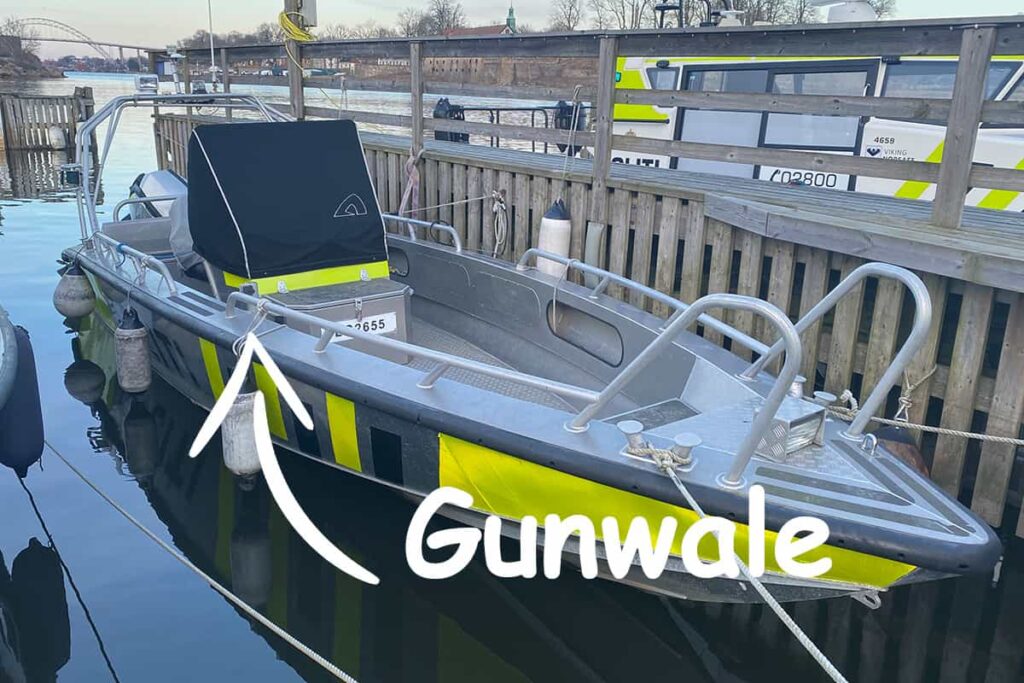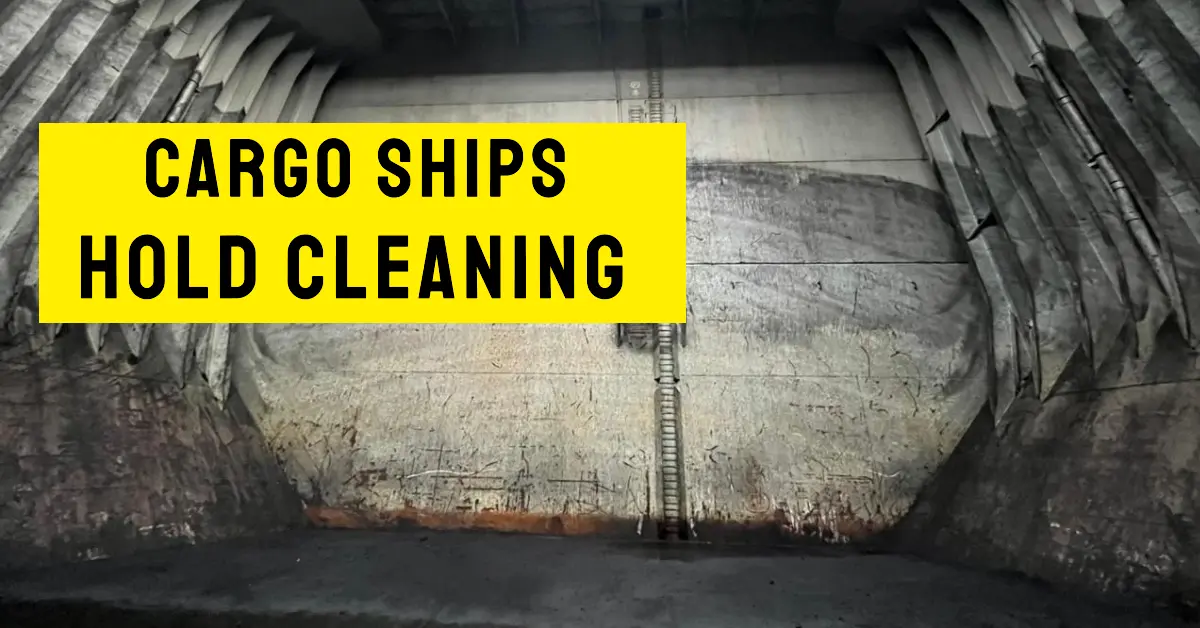If you’re a boat enthusiast, you’ve likely heard the term “gunwale” mentioned in conversations about boat construction, design, or safety.
But what exactly is a gunwale, and why is it so important in the world of boating? In this article, we’ll delve into the history, purpose, and types of gunwales on boats, as well as discuss how to maintain and repair them.

Gunnels on a Boat
Gunnels, also known as gunwales, are a crucial part of a boat’s structure. Pronounced as “gunnels,” these are the upper edge of the side of a boat. Originally, the gunwale was the “gun ridge” on a sailing warship.
This represented the strengthening wale or structural band added to the design of the ship to securely mount the ship’s guns.
Today, the term gunwale is used to denote the top edge of the sides of the boat, providing structural integrity and serving as a handy place to tie off lines.
Definition and Purpose
The gunwale (pronounced “gunnel“) is the top edge of a boat’s hull, running along both sides from the bow to the stern. Gunwales serve a variety of purposes, including providing structural support, ensuring the safety of passengers and crew, and offering attachment points for various accessories and equipment.
They often work in conjunction with other parts of a boat, such as a thwart, to provide stability and balance.
Gunwale Construction and Materials
Gunwales can be made from a variety of materials, including wood, aluminum, and composite materials. The choice of material depends on factors like the boat’s design, intended use, and budget.
Each material has its pros and cons, which we will explore in more detail later in this article. Understanding the different parts of a boat can help you make informed decisions about the materials and design of your gunwale.
Gunwale History and Evolution
Historically, gunwales were made of wood and were an integral part of a boat’s hull structure. They were initially used to strengthen the boat and to provide a platform for oarsmen or rowers. With the advancement of boat design and technology, gunwales have evolved to serve a broader range of purposes, incorporating different materials and construction methods.
Today, they can be found on a variety of boats, from small canoes to larger vessels like pontoon boats, and offer numerous options for customization and accessorizing.
Importance of Gunwales in Boat Design
Structural Stability
One of the primary functions of a gunwale is to provide structural stability to the boat. The gunwale ties the boat’s hull together, preventing it from flexing or twisting under stress.
A well-designed and properly installed gunwale can significantly improve a boat’s overall strength and durability, particularly in relation to the transom, another critical structural component of the boat.
Passenger and Crew Safety
Gunwales also play a crucial role in ensuring the safety of passengers and crew on board. They provide a barrier that prevents people from accidentally falling overboard and can also serve as a handhold or support when moving around the boat.
The gunwale design contributes to the overall stability of the hull, with some designs offering greater stability than others.
Attachment Points for Accessories
In addition to structural support and safety, gunwales provide attachment points for various accessories and equipment, such as cleats, rod holders, and paddle clips. This versatility allows boaters to customize their vessel to suit their specific needs and preferences.
For example, accessories for Jon boats can be easily attached to the gunwales, enhancing the boating experience and improving functionality.
Types of Gunwales on Boats
Traditional Wooden Gunwales
Wooden gunwales have been used for centuries and are still popular among boating enthusiasts who appreciate their classic appearance and natural aesthetic. They are typically made from hardwoods, such as oak or teak, which offer strength, durability, and resistance to rot and decay.
However, wooden gunwales require regular maintenance, including sanding, sealing, and varnishing, to protect them from the elements and prolong their lifespan. These traditional materials are just one example of the various materials used in boat building.
Aluminum Gunwales
Aluminum gunwales are popular in modern boat designs due to their strength, lightweight nature, and resistance to corrosion. They require less maintenance than wooden gunwales and are well-suited for a variety of boat types, including canoes, kayaks, and small powerboats.
Some boat owners prefer the sleek, contemporary look of aluminum gunwales, while others appreciate their practical benefits, such as reduced weight and increased durability.
Composite Gunwales
Composite gunwales are made from a combination of materials, such as fiberglass, carbon fiber, or other synthetic materials. These gunwales offer the benefits of both wooden and aluminum gunwales, with improved strength, reduced weight, and low maintenance requirements.
The choice between carbon fiber and fiberglass or other composites will depend on factors like budget and performance needs. Composite gunwales are often found on high-performance boats, where their lightweight and strong construction is highly valued.
Maintaining and Repairing Gunwales
Inspection and Cleaning
Regular inspection and cleaning of your boat’s gunwales are essential for maintaining their appearance and performance. Inspect for any signs of damage, such as cracks, dents, or loose fastenings, and address any issues promptly. Clean the gunwales with a mild soap and water solution, and rinse thoroughly to remove any residue.
Repairing Damaged Gunwales
Damaged gunwales should be repaired as soon as possible to prevent further damage to the boat’s structure. For wooden gunwales, this may involve sanding, filling, and refinishing the affected area.
Aluminum and composite gunwales may require professional repair or replacement, depending on the extent of the damage. For example, if you have a fiberglass boat hull with damaged gunwales, seek expert advice on the appropriate repair methods.
Upgrading and Customizing Gunwales
Boat owners often choose to upgrade or customize their gunwales to better suit their needs or preferences. This may include adding additional attachment points for accessories, reinforcing the gunwale for added strength, or updating the appearance with new materials or finishes.
Choosing the Right Gunwale for Your Boat
When selecting a gunwale for your boat, consider factors such as the boat’s design, intended use, and budget. Each type of gunwale has its advantages and disadvantages, so it’s essential to weigh your options carefully and choose the one that best meets your needs.
Conclusion
Gunwales are an essential component of any boat, providing structural support, safety, and versatility. By understanding the different types of gunwales and their unique benefits, you can make an informed decision when choosing the right gunwale for your boat.
Regular maintenance and prompt repair of your boat’s gunwales will ensure their longevity and continued performance.
- Comprehensive Guide to Hold Cleaning for Cargo Ships: Ensuring Maritime Safety and Efficiency – October 19, 2024
- Responsibilities of a Fourth Engineer on Cargo Ships – September 10, 2024
- The Role of Cargo Ships in Global Trade – August 22, 2024



